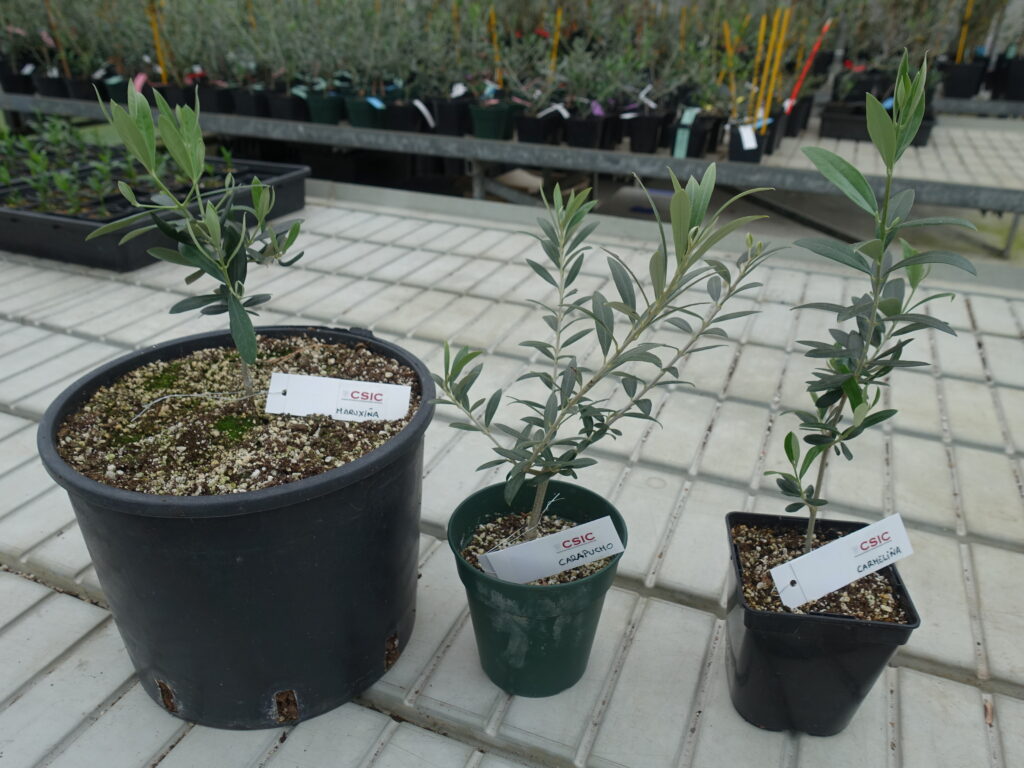The Commercialization of New Galician Olive Trees is Promoted
* This article has been translated into English using Google Translate and may contain errors.
The Galician olive tree varieties CARAPUCHO, CARMELIÑA, and MARUXIÑA are now registered in the Commercial Varieties Registry and published in the BOE following the work carried out by the Oliveiras de Galicia operational group.
The conference “Advances in the production of certified native olive plants of Galicia” is being held today at IES O Ribeiro (Ribadavia) to present the progress in research conducted by the operational group.

Santiago de Compostela, March 12, 2025. The Spanish National Research Council (CSIC), through its Vice Presidency for Innovation and Transfer, and based on research conducted by the Viticulture, Olive, and Rose (VIOR) group of the Biological Mission of Galicia (MBG), initiated in 2019 the procedures for the inclusion of up to 11 native Galician olive varieties to date.
Knowledge Transfer Conference
Three of these Galician olive tree varieties are already listed in the Commercial Varieties Registry. Specifically, they are the CARAPUCHO, CARMELIÑA, and MARUXIÑA olive trees. To mark this occasion, the conference “Operational Group (GP) Oliveiras de Galicia: Advances in the production of certified native olive plants of Galicia” is being held today at IES O Ribeiro (Ribadavia). The main objective is to inform the sector about the significance of this approval and the advances in research being carried out within the GP. In particular, preliminary results on in vitro micropropagation and cutting multiplication will be presented, as well as the eleven native olive varieties that are responding best to these techniques.
The conference will include presentations on the results of various plant multiplication techniques for native olive trees and an explanation of the process for registering new olive varieties in the Commercial Varieties Registry. Additionally, there will be a tasting of AOVEs (Extra Virgin Olive Oils) produced in 2024.
Registration of New Commercial Varieties
The recognition of CARAPUCHO, CARMELIÑA, and MARUXIÑA as unique and distinct new olive varieties means that nurseries can now begin commercializing plants of these three varieties once they receive the transferred material, and olive growers can plant them. Oils produced from these varieties can be marketed with the variety name on the packaging labels.
The registration process, initiated, developed, and fully funded by CSIC through its Vice Presidency for Innovation and Transfer, lasted five years and consisted of several phases. This process is based on research on native Galician olive trees started in 2012 by the VIOR group, developed within various research projects funded by agreements between the Juana de Vega Foundation and CSIC.
To register a variety, a formal application must be submitted to the Ministry of Agriculture, Fisheries, and Food. This application must include a detailed description of the variety following the applicable Technical Regulations for Variety Registration. The Vice Presidency for Knowledge Transfer has so far submitted descriptive data provided by the researchers of the VIOR Group for 11 olive varieties, including the three recently approved ones.
Furthermore, the procedure required sending at least eight live specimens of each variety to CEVO (Olive Variety Examination Center) along with their phytosanitary passports and certification confirming that the material was free from bacterial diseases regulated for olive trees (Verticillium dahliae, Pseudomonas savastanoi pv. savastanoi, and Xylella fastidiosa). These specimens were monitored at the center until they bore fruit for at least two consecutive years, ensuring that their characteristics matched those described by VIOR Group researchers.
Research on Native Galician Olive Trees
The scientific research on native olive trees from Northern and Northwestern Spain conducted by CSIC through the VIOR group has resulted in several publications, including the article “Identification and Characterization of Relict Olive Varieties (Olea europaea L.) in the Northwest of the Iberian Peninsula”, recently published in the journal Horticulturae. This paper describes not only the three newly registered varieties but also others currently undergoing the registration process, some of which are expected to be approved this year.
For More Information
CSIC Delegation in Galicia | Communication Unit | Ana Bellón (ana.bellon@csic.es)
Biological Mission of Galicia | Technical Transfer Vice Directorate | Pedro Peón (pedro.peon@csic.es)

